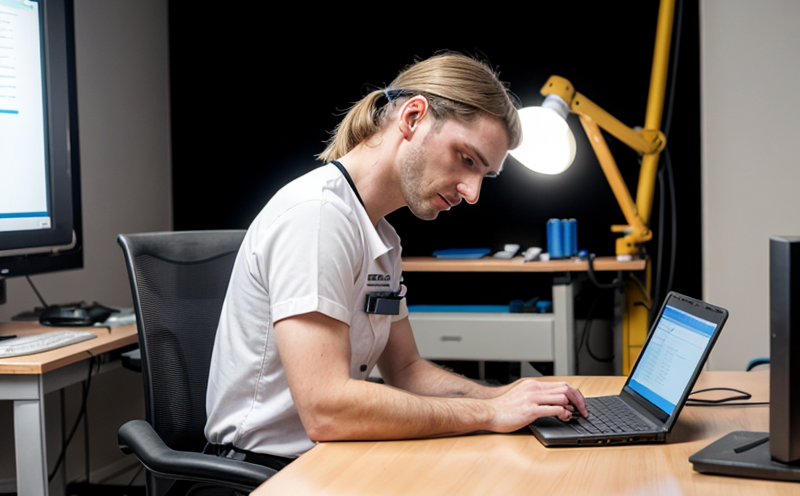RTCA DO-275 Human Factors Testing of Cockpit Display Systems
The RTCA DO-275 human factors testing standard is a critical component in ensuring that cockpit display systems are designed and manufactured to meet the highest safety standards. This service focuses on the evaluation of user interface design, readability, and usability of these displays. The objective is to ensure that pilots can effectively interact with system controls under various operational conditions without compromising safety or efficiency.
RTCA DO-275 addresses several key areas including but not limited to display legibility, task allocation, and the overall user experience. It mandates rigorous testing methodologies designed to identify potential issues before they impact flight operations. This includes evaluating how well users can perceive information presented on a display, comprehend it, and act upon it accurately.
The standard requires that tests are conducted in controlled environments simulating real-world conditions such as cockpit lighting, noise levels, and temperature fluctuations. These tests aim to assess the effectiveness of various design elements like font size, color contrast, and layout arrangements. By doing so, manufacturers can ensure their products meet regulatory requirements while also enhancing pilot performance and reducing errors.
Aircraft cockpits are complex environments where every second counts during critical phases of flight. Therefore, it is essential that all components within these spaces contribute positively towards overall situational awareness and decision-making capabilities. RTCA DO-275 plays a vital role in achieving this goal by providing clear guidelines on how to design interfaces that support safe and efficient operations.
Incorporating human factors considerations into the development process early on allows designers to anticipate user needs more accurately, leading to better-informed decisions throughout the lifecycle of a product. This proactive approach helps reduce risks associated with miscommunication between users and systems, ultimately improving both safety and operational efficiency.
Our team specializes in conducting comprehensive RTCA DO-275 human factors testing services for cockpit display systems. We employ experienced professionals who understand both the technical aspects of aviation technology as well as the psychological dimensions influencing human performance. Our facilities are equipped with state-of-the-art tools necessary to simulate realistic scenarios, allowing us to provide accurate assessments that meet or exceed industry expectations.
By leveraging our expertise in this area, clients gain valuable insights into areas where improvements can be made, ensuring they stay ahead of regulatory changes and competitive pressures. With meticulous attention paid to detail during each stage of the testing process, we deliver reliable results that help build trust among stakeholders and contribute positively towards achieving certification goals.
Why It Matters
The importance of human factors in aviation cannot be overstated. Even small design flaws can have significant implications for flight safety and crew well-being. For instance, a poorly designed display might lead to confusion or misinterpretation during critical moments when quick decisions are required.
- Improves Situational Awareness: Clear displays enhance pilots' ability to understand their surroundings and make informed choices.
- Safeguards Against Errors: Effective human factors design reduces the likelihood of mistakes that could compromise safety.
- Promotes Efficient Operations: Optimized interfaces streamline workflow, allowing crews to focus on essential tasks without unnecessary distractions.
Adhering to standards like RTCA DO-275 ensures compliance with industry best practices and helps maintain a high level of trust among passengers, operators, and regulatory bodies. It also demonstrates a commitment to continuous improvement and innovation within the aviation sector.
Customer Impact and Satisfaction
Implementing RTCA DO-275 human factors testing early in the design process has numerous benefits for our customers:
- Enhanced Safety: By identifying potential issues before they become operational problems, we help ensure that all systems function safely and reliably.
- Better User Experience: Our tests focus on creating intuitive interfaces that are easier to use, thereby improving overall user satisfaction.
- Informed Decision-Making: Through detailed analysis of test results, our customers gain valuable insight into areas where enhancements can be made.
- Regulatory Compliance: Ensuring adherence to relevant standards helps avoid costly delays and penalties during the certification process.
Clients often report higher levels of satisfaction due to the comprehensive approach we take towards understanding their specific requirements. Our dedication to excellence in every aspect of our work has earned us a reputation as trusted partners in the aerospace industry.
International Acceptance and Recognition
The RTCA DO-275 standard is widely accepted across the international aviation community, reflecting its importance within this sector. Many countries recognize compliance with these guidelines as part of their certification processes for aircraft manufacturers:
- Airworthiness Authorities: Organizations such as the Federal Aviation Administration (FAA), European Union Aviation Safety Agency (EASA), and others mandate adherence to RTCA DO-275 when approving new models.
- Certification Bodies: Industry leaders like UL, TUV, and others incorporate this standard into their certification procedures for cockpit display systems.
This widespread acceptance underscores the significance of RTCA DO-275 in promoting global consistency and quality assurance within the aviation industry. It fosters a collaborative environment where stakeholders can work together towards common goals, enhancing overall safety standards worldwide.





